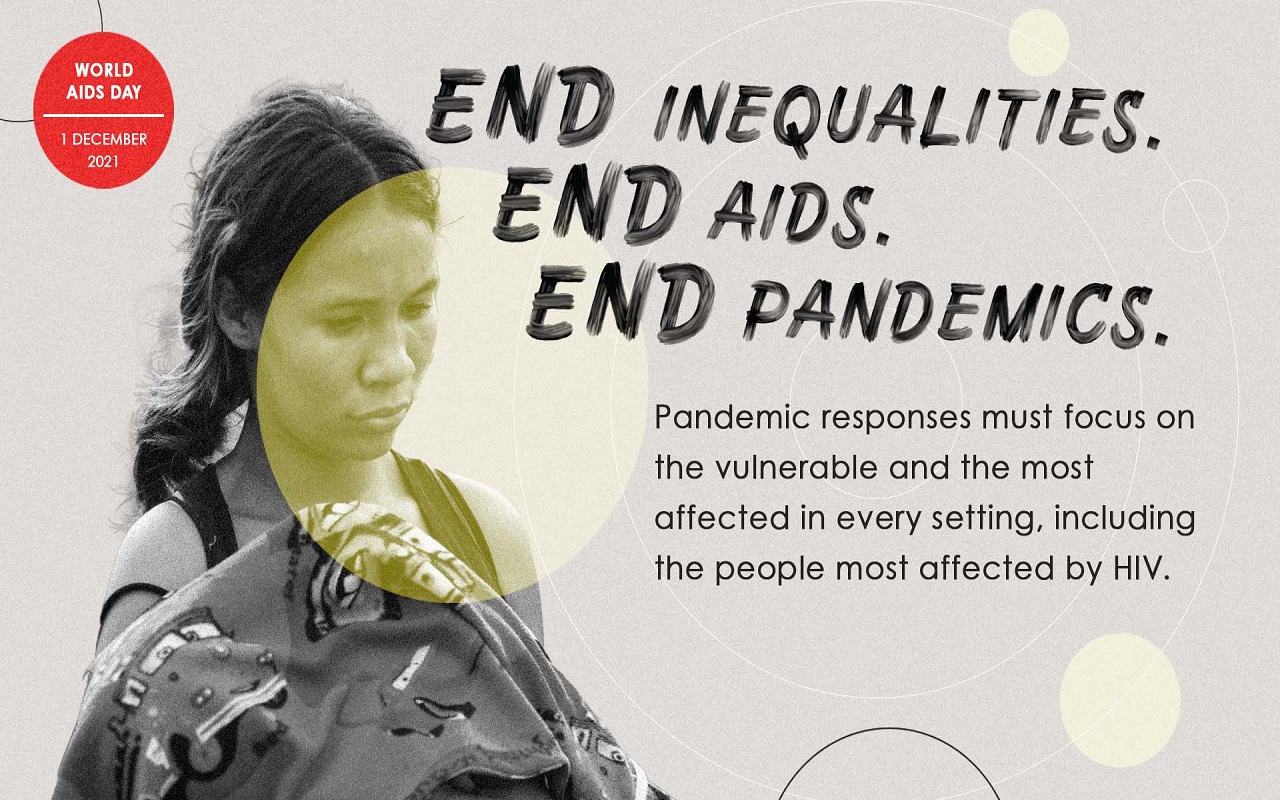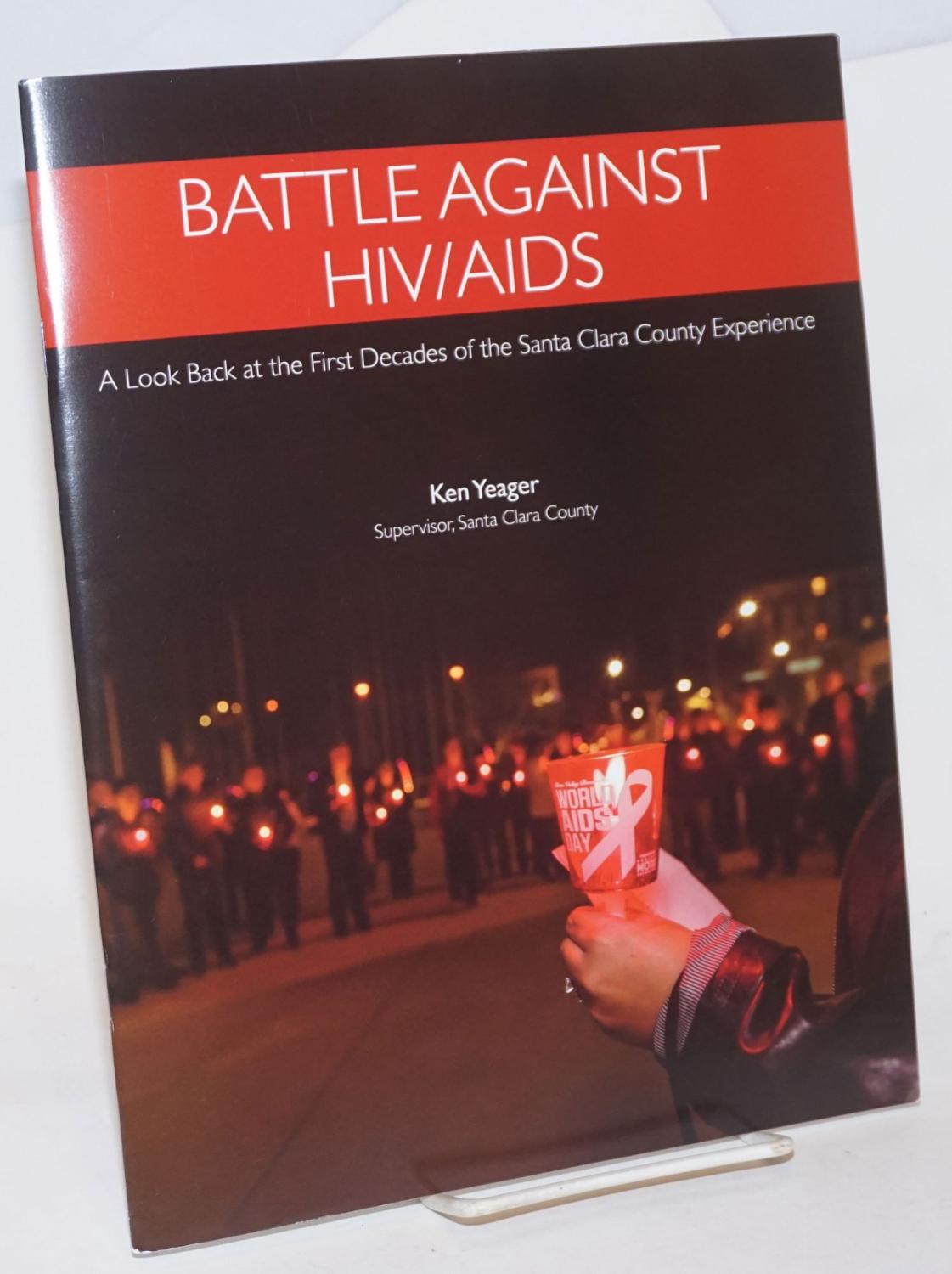
World AIDS Day is a globally recognized awareness day celebrated every year on December 1. The first observance of World AIDS Day was in 1988. Conceived originally by James W. Bunn and Thomas Netter. Bunn of the Global Programme on AIDS at the World Health Organization, each year global leaders proclaim December 1 as World AIDS Day as a day of awareness, call to action, and memorial of all those affected by the HIV/AIDS epidemic.
Each year, UNAIDS, which took on planning World AIDS Day in 1996, decides on a theme on which to focus awareness on World AIDS Day. For 2021, the theme is "End Equalities. End AIDS. End Pandemics". This theme not only highlights the urgency to end the global AIDS epidemic around the world, but specifically highlights the need to address the social inequalities that prevent access or even information about HIV/AIDS, its prevention and treatment. Unless those inequalities are addressed through radical change, UNAIDS predicts we would not meet the goals to end AIDS by 2030.
Numbers Speak
Around the world: an average of 37.7 million people globally were living with HIV in 2020. Of that number, 36 million were adults and 1.7 million were children (age 0-14 years), and 53% of the total were women/girls. Globally, an average of 1.5 million of new cases diagnosed in 2020. An average of 680,000 globally died of AIDS-related illnesses in 2020. Since the start of the epidemic, 79.3 million people have become infected by HIV and 36.3 million people have died of AIDS-related illnesses. The region most affected by the AIDS epidemic is Sub-Saharan Africa.
For more specific data, or to run your own data sets, visit UNAIDS (global numbers) or the Centers for Disease Control (for US numbers).
What can you do?
The San Jose Public Library has a variety of ways for you to become informed about how HIV/AIDS affects our community and our world. Check out some of these books in our collection and online resources, all available for free with your San Jose Public Library Card.
Further Reading
Battle Against HIV/AIDS: a Look Back at the First Decades of the Santa Clara County Experience by Ken Yeager
Written by Ken Yeager, Santa Clara County's first openly gay elected official. From the Introduction: "The LGBTQ community has made great strides toward civil rights and in the fight against HIV/AIDS. Today does not feel like it did in the 1980s and 90s. It's important to recognize that the decades prior to our recent advancements were ones of hardship and devastating loss of life." A good starter to understand the effect of HIV/AIDS in our local communities.
To End a Plague: America's Fight to Defeat AIDS in Africa by Emily Bass
"To End a Plague is not merely a history of this extraordinary program; it describes the cost of success in our broken political system. PEPFAR was likely a cynical political ploy--a "legislative trophy" as the New York Times described it--and its overseers, including the now-famous Coronavirus Task Force leader Deborah Birx--had to make moral and political compromises to keep it from being shut down. Yet the program has persevered and made an enormous improvement in millions of lives." --from the publisher. This book is a good snapshot of a particular time of recent history of US involvement in addressing the AIDS epidemic in Sub-Saharan Africa.
HIV/AIDS in Sub-Saharan Africa: Understanding the Implications of Culture Context by Jean Baxen
Popular understanding of the HIV/AIDS pandemic in Sub-Saharan Africa is riddled with contradiction and speculation. This is revealed in HIV/AIDS in Sub-Saharan Africa, which explores the various contexts in which debate about HIV/AIDS takes place and examines how the pandemic is perceived by scholars, religious leaders and traditional healers, among others - in communities in and around South Africa. Using a social theory lens, the book focuses on not only the cultural and contextual practices, but also the methodological and epistemological orientations around HIV/AIDS in education that shape community and individual interpretations of this disease. --Provided by publisher
The Race to Discover the AIDS Virus by Stuart Kallen
In the early 1980s, doctors sounded the alarm. A mysterious new disease--acquired immunodeficiency syndrome, or AIDS--was spreading around the world. While many of the first AIDS patients were gay men, no one seemed to be immune from the deadly blood-borne disease. Researchers set to work to discover what was causing AIDS. They suspected a virus. Two teams of scientists- one in the United States and one in France - worked tirelessly to identify the virus and to develop a blood test to detect it. This title written for young adult readers highlights the urgency and drama surrounding the scientific discovery of a new and deadly disease while it continues to spread.
Magic Johnson: Basketball Legend, Entrepreneur, and HIV/AIDS Activist by Diane Dakers
"In 1991, Magic announced he had tested positive for HIV, a virus that can lead to the life-threatening disease AIDS, and was retiring from basketball. Little was known then about HIV/AIDS and its prevention. His declaration shocked the public but succeeded in putting a familiar and much-admired face on a disease that was shrouded in fear and prejudice. Magic Johnson's legacy includes his inspirational work as an advocate for the prevention of HIV and the still-incurable disease AIDS through his own foundation, which provides programs for HIV/AIDS education and prevention, including testing and safe sex practices."--from the publisher. A great book for young kids to learn more about the widespread effects of HIV/AIDS, the stigma or shame surrounding the virus, and the importance of activism.
Additional Resources
- To learn more about the effects of HIV/AIDS on women's health, check out Office on Women's Health. They have resources about HIV/AIDS, prevention, and treatment, as well as support for women living with HIV/AIDS.
- If you're looking for more medical information about HIV/AIDS, and information on treatment, to help with research and/or talking with your doctor, MedlinePlus has plenty of fact-based information to help. It is free with your library card.
- Gale Databases contain a wealth of information for all ages regarding a variety of perspectives about the topic of HIV/AIDS. As an LGBTQ+ issue, you can access the Global Encyclopedia of Lesbian, Gay, Bisexual, Transgender, and Queer History, as well as Defining Documents in American History - LGBTQ+ (1923-2017). For a global historical view on HIV/AIDS and its global reach, you can access World History in Context. For a specific United States perspective, you can search through U.S. History in Context, as well.
Thank you to librarian, Todd Charles, for additional research for this blog post.




Add a comment to: World AIDS Day